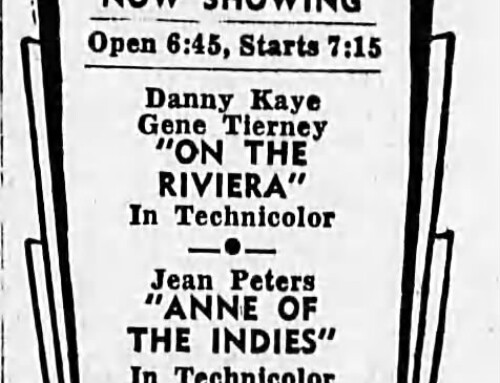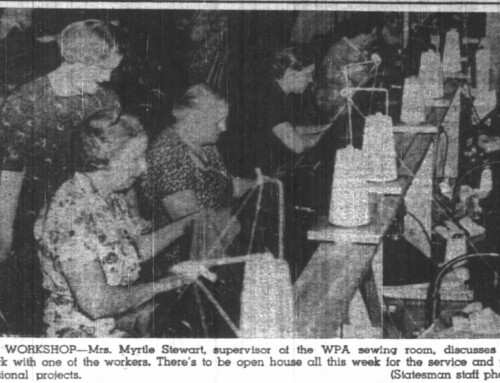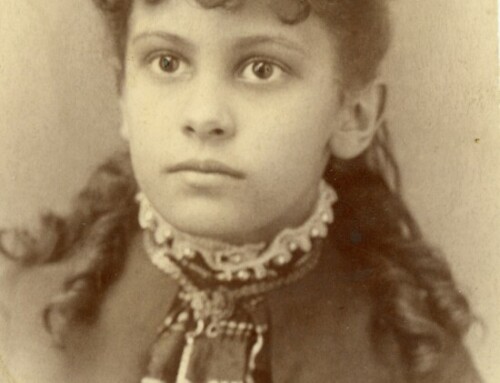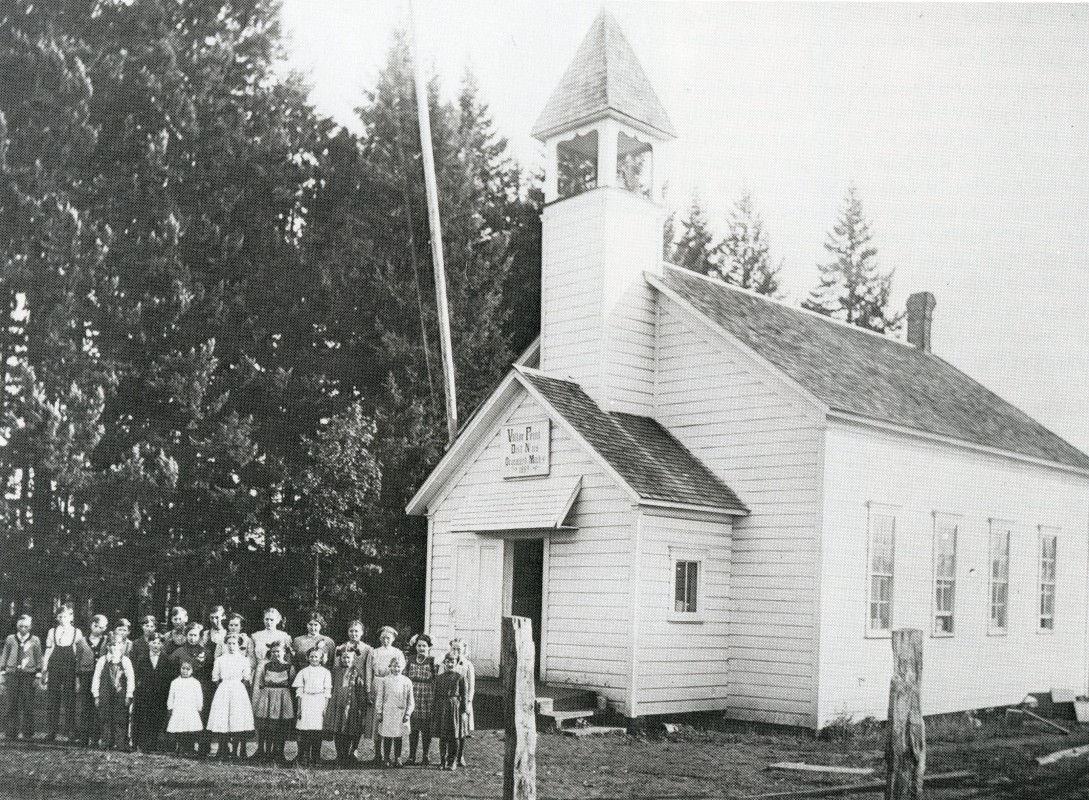
Victor Point School before 1915. MCHS publication – School Days II
“I sought once more the spot
Where the old school-house stood
In childhood days, and from the vacant lot,
As one unconscious of the changes wrought,
Surveyed the rock-bound field, the hill, the wood,
The brook, the glen, and the rough path my infant feet had trod.”
Nestled in a grove of fir trees the old Victor Point School stands watch over its newer counterpart just across the road, reminiscent of the Old Schoolhouse poem by Edmund Turney. The one-room schoolhouse was built in October 1889 in the foothills east of Salem, between the towns of Sublimity and Silverton. It measured 32 x 24 feet at its base and boasted a bell tower with a huge black bell to call its students to school. The original building was painted white and its student population was carved out of portions from the surrounding districts of Silver Cliff, McAlpin and Union Hill. The name Victor Point is traced back to a local mother, Mrs. Mary Darby. In the midst of a rather contentious meeting of local citizens all with vested interest in a school it was her rationalization and suggestion that the decision to build a school in their location was in and of itself a victory. The locals had won their point, and so the name evolved.
The first term in the Fall of 1889 was approximately three months long and was taught by Linnie Lewis, with a class of 21 students ranging in ages from 5 to 18 years of age. A three-month spring term followed. Teachers in the early years were paid $35.00 a month in salary and were expected to take on a wide variety of jobs such as splitting wood and serving as their own janitors. With no improved roads at the time it was necessary for them to walk in rain, snow, and mud, climb over fences or tramp through the woods. These could be primitive and trying conditions for teachers, some not much older than their students. Away from their families for the first time. Teacher turnover rate was high until the school began producing enough graduates that could return to teach.
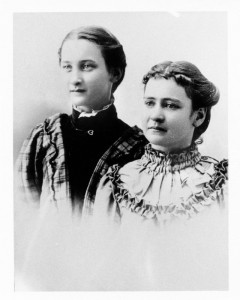
Ava Jane and Ethel Darby – Victor Point School students who became teachers. WHC 1998.016.0013
Two such memorable graduates attended the school from its earliest beginnings, sisters Ava and Ethel Darby. The Darby children were listed among the first group of students in 1889. James and Mary Darby were among the first settlers of the Victor Point area and proactive in civic matters such as schools. They were the parents of 8 children: Ethel, Henry, Roy, Ava, Ivan, Elsie, James and Una. Oldest daughter Ethel returned to Victor Point School as a teacher in the early 1900s then left to marry Ben Hofstetter of Salem in 1910. After Ethel’s term ended her sister Ava taught at the school for many years and throughout her teaching career would return to Victor Point several times. Then, when her country entered World War II Ava felt the call to duty and left off teaching to join the war effort working in a hospital in Honolulu, Hawaii.
During both sister’s tenure at the school, teaching supplies such as textbooks were in short supply, though the school did boast a globe and map or two. The school library by the 1920s was a homemade cupboard with approximately 50 well-worn books. The pump organ and later piano, provided accompaniment to many a school program, church service and community meeting. Christmas programs were special favorites that the children looked forward to every year. Each child would have a part. The stage would be decorated with a huge Christmas tree draped in garlands of popcorn, homemade ornaments and lighted candles.
Between the years of 1891 and 1894 the school population grew to 30 children between the ages of 4 and 20. And Victor Point, the rural farming community grew to a thriving place with a general store, gas pump and garage, bandstand, and a post office. Sadly, the once vibrant community began its decline in the 1920s when the store and gas station closed, fell into disrepair and were eventually torn down. The old school and bandstand remained until 1946 when the school closed and was replaced with a newer, larger school across the street. In the 1950s some improvements were made to the old structure by replacing the roof and removing the bell tower. In 1995 a local group formed the Victor Point School Historical Society and rallied to save the school, help it gain recognition for its history, and give it a new life. Their goal was achieved on September 27, 1996 when the school was placed on the National Register of Historic Places, one of only six one-room rural schoolhouses in Oregon listed. A lone sentinel representing its long-gone companions, one-room schoolhouses that have filled their purpose. All while children’s laughter echoes from its replacement across the road.
There, though the springing grass
Had thick the place o’erspread,
I saw once more the teacher and her class,
As o’er my vision seemed afresh to pass
Each form familiar, though, as time had sped,
Full many a name had found its record with the silent dead.
This article was written by Kaylyn F. Mabey for the Statesman Journal where it was printed 27 August 2017. It is reproduced here with sources for reference purposes.
Sources:
- Marion County History, Volume XIV, “Victor Point”, by Bernita J. Sharp, p. 50-56
- Statesman Journal (Salem, OR), Monday, Feb. 12, 1996, “One-room schoolhouse grounded in history”, p. 10
- Capital Journal (Salem, OR), Dec 1, 1966, p. 19
- National Register of Historic Places Registration Form – Victor Point School




